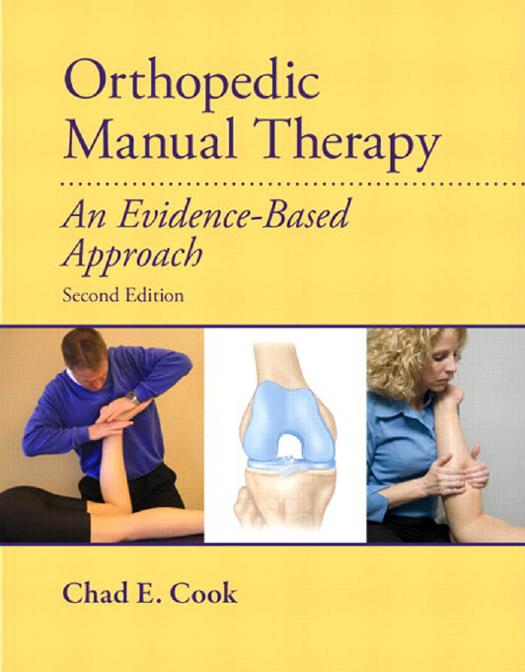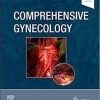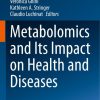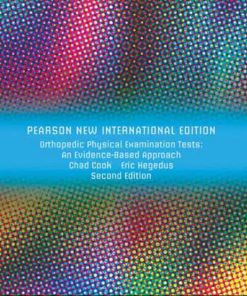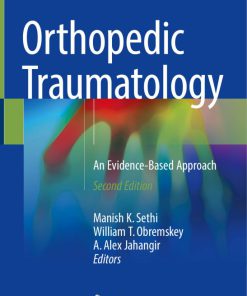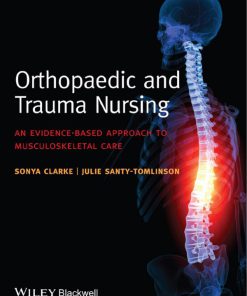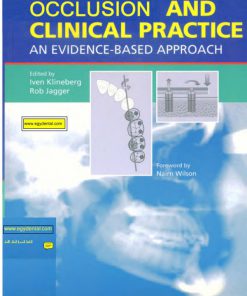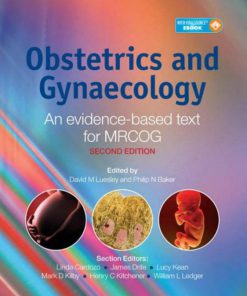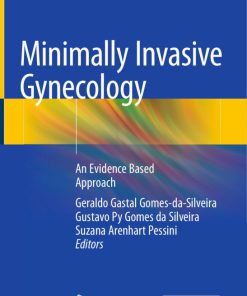Orthopedic Manual Therapy An Evidence Based Approach 2nd Edition by Chad Cook, Eric Hegedus ISBN 9780133463934 0133463931
$50.00 Original price was: $50.00.$25.00Current price is: $25.00.
Authors:Chad E. Cook , Series:Surgery [46] , Tags:Physical Therapy; Orthodontics , Author sort:Cook, Chad E. , Ids:0132727463 , Languages:Languages:eng , Published:Published:Nov 2012 , Publisher:Pearson , Comments:www.myhealthprofessionskit.com
Orthopedic Manual Therapy An Evidence Based Approach 2nd Edition by Chad Cook, Eric Hegedus – Ebook PDF Instant Download/Delivery. 9780133463934 ,0133463931
Full download Orthopedic Manual Therapy An Evidence Based Approach 2nd Edition after payment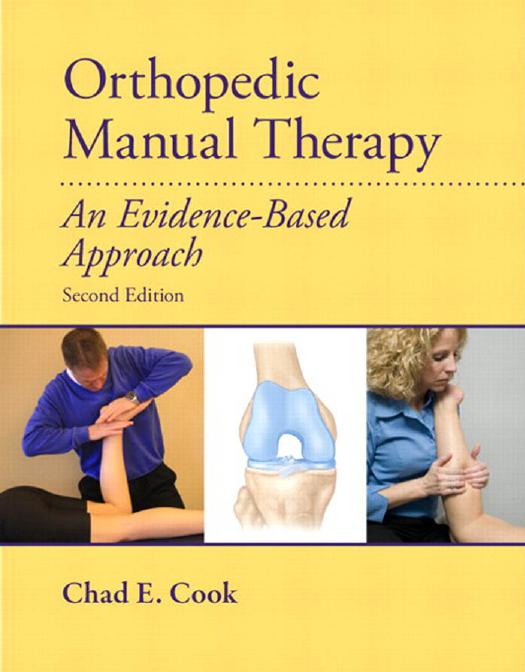
Product details:
ISBN 10: 0133463931
ISBN 13: 9780133463934
Author: Chad Cook, Eric Hegedus
Orthopedic Manual Therapy An Evidence Based Approach 2nd Edition Table of contents:
Chapter 1 Orthopedic Manual Therapy
Objectives
What Constitutes Orthopedic Manual Therapy?
Construct
Terminology
The Science of Orthopedic Manual Therapy
Biomechanical Changes
Joint Displacement
Summary
Neurophysiological Changes
Spinal Cord Mechanisms
Peripheral Mechanisms
Central-Mediated Mechanisms
Temporal Effects
Summary
Psychological Changes
Placebo
Patient Satisfaction and Expectation
The Role of Psychological Covariates
Emotions
Coping Strategies
Summary
Hierarchy of Evidence
Managing the Quantity of Information
The 5S Model
Assigning Levels of Evidence
Methodological Guidelines
Chapter Questions
Chapter 2 Orthopaedic Manual Therapy Assessment
Objectives
Clinical Decision-Making Models
Hypothetical-Deductive
Heuristic Decision Making (Clinical Gestalt)
Mixed Model Decision Making
Summary
Assessment Modifiers of Decision Making
Probabilistic Decision Making
Patient Response Triggers
Classification or Clusters
Summary
Clinical Reasoning
Summary
Decision Making in Manual Therapy
Manual Therapy Backgrounds
Philosophical Differences
Summary
Philosophical Analysis
Summary
What Is the Best Approach?
The Convex–Concave Rule
Isometric Tension Testing
Cyriax’s Capsular Pattern
Cyriax’s End-Feel Classification
Directional Coupling of the Lumbar Spine
Directional Coupling of the Thoracic Spine
Postural Asymmetry and the Relationship to Impairment
Assessment of Passive Accessory Spinal Movement
Biomechanic Theory of Disc Displacement with Repeated Movements
An Overreliance on the Diagnostic Value of Special Testing
Dogmatic Use of Clinical Prediction Rules on Patients Who Meet Criteria
Summary
Assessment
The Patient Response-Based Model
Advantages of the Patient Response-Based Approach
Disadvantages of the Patient Response-Based Approach
Summary
Chapter Questions
Chapter 3 Orthopedic Manual Therapy Clinical Examination
Objectives
Determining Who Is and Is Not a Manual Therapy Candidate
Contraindications to Orthopedic Manual Therapy
Absolute versus Relative Contraindications
Active Movements
Static Stretching, Mobilization, and Manually Assisted Movements
Summary
Detailed Elements of the Clinical Examination Process
Observation
General Inspection
Introspection
Summary
Patient History
Mechanism and Description of Injury
Concordant Sign
The Nature of the Condition
Severity of the Disorder
Irritability
Stage
Behavior of Symptoms
Pertinent Past and Present History
Patient Goals
The Baseline
Putting the Subjective History Examination Findings Together
Summary
The Physical Examination
Active Movements
Passive Movements
Passive Physiological Movements
Procedure for Examination of Passive Physiological Range
Passive Accessory Movements
Combined Movements
Fine-Tuning Mechanisms
Magnitude of Force
Rate of Increase of Force
Duration of Loading
Targeted Tissue to Which the Force is Applied
Location of Manual Force in Relation to the Center of the Targeted Structure
Direction of Force
Contact Area over Which the Force is Applied
Special Clinical Testing
Palpation
Muscle Provocation Testing
The Use of Special Clinical Tests for Diagnostic Value
The Use of Special Clinical Tests for Prognosis
The Use of Special Clinical Tests As Structural Differentiation Tests
Summary
Putting the Objective Physical Examination Findings Together
Post-Examination Clinical Reasoning
Summary
Chapter Questions
Chapter 4 Treatment and Re-Examination
Objectives
Treatment
Treatment Philosophy
Summary
Manual Therapy Techniques
Static Stretching Techniques
Summary
Mobilization (Nonthrust Manipulation)
Segmental/Joint Mobilization
Nerve Mobilization
Soft-Tissue Mobilization
Summary
Manipulation (Thrust Manipulation)
Targeted Specific Manipulation
Summary
Combined Techniques
Summary
General versus Targeted Specific Techniques
Fine-Tuning the Techniques
Magnitude of Force
Rate of Increase of Force
Duration of Loading
Targeted Tissue to Which the Force is Applied
Location of Manual Force in Relation to the Center of the Targeted Structure
Direction of Force
Contact Area over Which the Force is Applied
Summary
Re-Examination
Summary
Chapter Questions
Chapter 5 Manual Therapy of the Cervical Spine
Objectives
Clinical Examination
Pretesting
Ligamentous Testing
Cervical-Arterial Dysfunction (CAD) Testing
Summary
Observation
Summary
Patient History
Summary
Physical Examination
Active Physiological Movements
Active Physiological Motion of the Upper Cervical Spine
Active Physiological Motion of the Lower Cervical Spine
Combined Movements
Summary
Passive Movements
Passive Physiological Movements
Combined Physiological Movements
Summary
Summary
Special Clinical Tests
Palpation
Manual Muscle Testing
Treatment Techniques
Active Physiological Movements
Passive Physiological Movements
General Techniques
Passive Accessory Movements (PAIVMS)
C0–1 Cervicogenic Treatment
C2–3 Cervicogenic Treatment
C1–2 Cervicogenic Treatment
Mobilizations with Movement
Traction
Manually Assisted Movements
Manipulation Techniques
Sitting
Summary
Targeted Specific Techniques
Passive Accessory Movements (PAIVMS)
Treatment Outcomes
The Evidence
Evidence for Cervical Manipulation and Mobilization
Evidence for Cervical Mobilization with Movement
Evidence for Thoracic Manipulation and Mobilization
Evidence for Cervical Traction
Summary
Chapter Questions
Patient Cases
Case 5.1: Mary Johnson (26-year-old female)
Case 5.2: John Smith (58-year-old male)
Case 5.3: Carla Robertson (79-year-old female)
Pearson myhealthprofessionskit®
Chapter 6 Manual Therapy of the Temporomandibular Joint
Objectives
Clinical Examination
Observation
Posture
Resting Position of the Teeth
Symmetry of Movement
Summary
Patient History
Psychosocial Factors
Summary
Physical Examination
Active Physiological Movements
Ruling out the Cervical Spine
Summary
Summary
Passive Movements
Passive Accessory Tests
Combined Movements
Summary
Special Clinical Tests
Palpation
Manual Muscle Testing
Treatment Techniques
Treatment Philosophy
Internal Derangement
Degenerative and/or Inflammatory Conditions
Myofascial Conditions
Differentiation of Pain from Cervical Contribution
Treating Internal Derangement
Treating Myofascial Pain
Treating Inflammation
Summary
Treatment Outcomes
The Evidence
Summary
Chapter Questions
Patient Cases
Case 6.1: Gretchan Leon (19-year-old female)
Case 6.2: Chris Halliwell (25-year-old male)
myhealthprofessionskit
Chapter 7 Manual Therapy of the Thoracic Spine
Objectives
Clinical Examination
Differential Diagnosis
Summary
Observation
Posture
Summary
Patient History
Psychosocial Factors
Summary
Physical Examination
Active Physiological Movements
Summary
Passive Movements
Passive Physiological Tests
Assessment of Passive Physiological Intervertebral Movements (PPIVMS)
Passive Accessory Tests
Unilateral Posterior Anterior (UPA)
Combined Passive Movements
Summary
Special Clinical Tests
Palpation
Manual Muscle Testing
Summary
Treatment Techniques
Postural
Passive Stretches
Therapist Facilitated
Traction Techniques
Mobilization
Combined Movements
Manipulation
General Techniques
Targeted Specific Techniques
Summary
Treatment Outcomes
The Evidence
Summary
Chapter Questions
Patient Cases
Case 7.1: Larry Goldman (53-year-old male)
Case 7.2: Mabel Knowles (62-year-old female)
Pearson myhealthprofessionkit
Chapter 8 Manual Therapy of the Shoulder Complex
Objectives
Clinical Examination
Differential Diagnosis
Summary
Observation
Posture
Summary
Patient History
Mechanism of Injury
Psychosocial Issues
Summary
Clinical Examination
Active Physiological Movements
Functional Active Shoulder Movements
Summary
Passive Movements
Passive Physiological Movements
Passive End-Feel for the Shoulder
Internal Rotation at 0 Degrees of Abduction
Internal Rotation at 70–90 Degrees of Abduction
Horizontal Adduction with Neutral Rotation
Horizontal Adduction with Internal Rotation
Summary
Passive Accessory Movements
PA for Pain Control
PA for Range-of-Motion Gains
Summary
Special Clinical Tests
Palpation
Muscle Testing
Treatment Techniques
Active Physiological Movements
Passive Physiological Movements
Passive Accessory Movements/Mobilization
Mobilization with Movement
Treatment Outcomes
The Evidence
Mobilization with Movement
Mobilization
Manipulation
Stretching
Manipulation of Regions Outside the Direct Intervention of the Shoulder
Summary
Chapter Questions
Patient Cases
Case 8.1: Kyle Sistrunk (43-year-old male)
Case 8.2: Mindy Sims (14-year-old female)
Case 8.3: Lilly Ardent (45-year-old female)
Pearson myhealthprofessionkit
Chapter 9 Manual Therapy of the Elbow–Wrist–Hand
Objectives
Clinical Examination
Observation
Introspection
Summary
Patient History
Elbow Symptoms
Wrist/Hand Symptoms
Psychosocial Factors
Summary
Physical Examination
Active Physiological Movements
Summary
Passive Movements
Passive and Combined Physiological Movements of the Elbow
Passive and Combined Physiological Movements of the Wrist and Hand
Passive Accessory Movements of the Elbow
Passive Accessory Movements of the Wrist
Summary
Special Clinical Tests
Palpation
Muscle Testing
Summary
Treatment Techniques
Active Physiological Movements
Passive Physiological Movements
Passive Accessory Movements
Cervical Mobilization or Manipulation for Elbow Pain
The Use of a Belt during Elbow Distraction
Mobilizations with Movements
The Elbow
The Wrist
Manipulation
Manipulation of the Elbow
Summary
Treatment Outcomes
The Evidence
Active Range-of-Motion Exercises
Passive Physiological Movements
Nerve Glides
Passive Accessory Mobilizations
Manipulation Procedures
Summary
Chapter Questions
Patient Cases
Case 9.1: Cyrus Flint (52-year-old male)
Case 9.2: Carol Downing (41-year-old female)
Pearson myhealthprofessionkit
Chapter 10 Manual Therapy of the Lumbar Spine
Objectives
Clinical Examination
Differential Diagnosis
Summary
Clinical Examination
Observation
Patient History
Area of the Symptoms
Summary
Physical Examination
Active Physiological Movements
Centralization Phenomenon
Available Range of Motion
The Use of Repeated Movements
The Use of Sustained Movements or Postures
Summary
Passive Movements
Passive Physiological Movements
Summary
Passive Accessories
Summary
Clinical Special Tests
Palpation
Manual Muscle Testing
Treatment Techniques
Targeted Outcome
Treatment-Based Classification
Specific Exercise Classification
Mobilization Classification
Generalized Techniques
Mobilization Procedures from the Examination
Targeted-Specific Techniques
Traction Group
Summary
Treatment Outcomes
The Evidence
Treatment Based on Classification
Clinical Prediction Rules
Thrust and Nonthrust Techniques
Traction and Decompression
Summary
Chapter Questions
Patient Cases
Case 10.1: Lonnie Wright (44-year-old male)
Case 10.2: Monique Jackson (76-year-old female)
Case 10.3 : Larry Flintstone (25-year-old male)
Pearson myhealthprofessionkit
Chapter 11 Manual Therapy of the Sacroiliac Joint and Pelvis
Objectives
Clinical Examination
Differential Diagnosis
Summary
Observation
Summary
Patient History
Pain Maps
Summary
Physical Examination
Active Physiological Movements
Summary
Passive Physiological Movements
Passive Accessory Movements
Summary
Special Clinical Tests
Palpatory Mechanisms
Movement-Based Testing
Provocation-Based Testing
Manual Muscle Testing
Summary
Diagnosis and Treatment Decision Making
Summary
Treatment Techniques
Active Physiological Movements
Passive Physiological Movements
Passive Accessory Movements (PAIVMS)
Manually Assisted Movements
Manipulation
Summary
Treatment Outcomes
The Evidence
Summary
Patient Cases
Case 11.1: Lindsey Knowles (24-year-old female)
Case 11.2: Carol Harstburger (26-year-old female)
Chapter Questions
Pearson myhealthprofessionkit
Chapter 12 Manual Therapy of the Hip
Objectives
Clinical Examination
Differential Diagnosis
Observation
Gait
Alignment
Patient History
Behavior of Pain
Summary
Physical Examination
Active Movements
Active Physiological Movements
Functional Tests
Axial Rotation
Summary
Passive Movements
Passive Physiological Movements
Passive Accessory Movements
Combined Movements
Summary
Special Clinical Tests
Palpation
Muscle Testing
Summary
Treatment Techniques
Stretching
Muscle Energy Methods
Mobilization with Traction
Mobilization with Compression
Mobilization with Movement
Manipulation
Summary
Treatment Outcomes
The Evidence
Stretching/Muscle Energy/Proprioceptive Neuromuscular Facilitation (PNF) Stretching
Mobilization
Strain–Counterstrain
Summary
Chapter Questions
Patient Cases
Case 12.1: Jeb Lonestar (67-year-old male)
Case 12.2: Carlita Montgomery (42-year-old female)
Pearson myhealthprofessionkit
Chapter 13 Manual Therapy of the Knee
Objectives
Clinical Examination
Observation
Summary
Patient History
Summary
Physical Examination
Active Physiological Movements
Plane-Based Active Range of Motion
Functional Active Range-of-Motion Testing
Summary
Passive Movements
Passive Physiological Movements
Summary
Passive Accessory Movements for the Tibiofemoral Joint
Passive Accessory Movements of the Patellofemoral Joint
Patellar Compression
Patellar Distraction
Summary
Special Clinical Tests
Palpation
Palpation for Joint Line Tenderness
Palpation for Knee Fractures
Manual Muscle Testing
Treatment Techniques
Mobilization Techniques
Tibial Shear at Multiple Ranges
Tibial Rotation at Multiple Ranges
Passive Stretching Techniques
Mobilization with Movements
Manipulation
Summary
Treatment Outcomes
The Evidence
Mobilization and Manipulation of the Tibiofemoral Joint
Patellofemoral Mobilization
Static Stretching
Targeted Other Joints for Carryover to the Knee
Summary
Chapter Questions
Patient Cases
Case 13.1: Wally Tiltson (36-year-old male)
Case 13.2: Rachel Robertson (72-year-old female)
Pearson myhealthprofessionkit
Chapter 14 Manual Therapy of the Foot and Ankle
Objectives
Clinical Examination
Differential or Contributory Diagnoses
Ottawa Ankle Rules
Summary
Observation
Summary
Patient History
Summary
Physical Examination
Active Physiological Movements
Summary
Passive Movements
Passive Physiological Movements
Summary
Passive Accessory Movements
Summary
Special Clinical Tests
Palpation
Summary
Treatment Techniques
Active Physiological Movements
Passive Physiological Techniques
Static Stretching
Mobilization Techniques
Mobilization with Movement
Manipulation Techniques
Summary
Treatment Outcomes
The Evidence
Exercise (Home or Clinic Initiated)
Proprioceptive Training
Static Stretching
Mobilization
Manipulation
Taping and Bracing Techniques
Summary
Chapter Questions
Patient Cases
Case 14.1: Timothy Hutchins (16-year-old male)
Case 14.2: Precious Johnson (52-year-old female)
Pearson myhealthprofessionkit
Chapter 15 Neurodynamics
Objectives
Clinical Examination
Definitions
Normal Physiological Responses to Nerve Tissue Provocation Tests (NTPT)
Summary
Observation
Patient History
Summary
Physical Examination
Active Physiological Movements
Passive Physiological Movements
Upper Extremity Tests
Summary
Lower Extremity Neurodynamic Tests
Clinical Use
Reliability and Validity
Summary
Passive Accessory Movements
Clinical Special Tests
Palpation of Nervous Tissue
Treatment Techniques
Treatment Philosophy
Differentiation from Mechanical Structures
Guidelines
Patient Response and Irritability
Contraindications and Precautions
Augmentation Techniques
Joint Mobilizations
Summary
Treatment Outcomes
The Evidence
Static Stretching of the Nerve
Flossing the Nerve
Tensioners of the Nerve
Mobilization of the Vertebrae over a Tensioned Nerve
Summary
Chapter Questions
Patient Cases
Case 15.1: Thomas Brown (66-Year-Old Male)
Case 15.2: Carla Fortiner (49-year-old female)
Pearson myhealthprofessionkit
Chapter 16 Soft-Tissue Mobilization
Objectives
Soft-Tissue Mobilization
Clinical Examination
Purpose
Observation
Patient History
Summary
Physical Examination
Active Physiological Movements, Passive Physiological Movements, and Passive Accessory Movements
Special Clinical Tests
Palpation
Trigger Point Assessment Technique
Trigger Point Assessment Techniques for Neck Region
Trigger Point Assessment Techniques of the Low Back and Hip Region
Summary
Muscle Length Testing
Muscle Length Testing of the Upper Trapezius
Muscle Length Testing of the Levator Scapula
Muscle Length Testing of the Scalenes
Muscle Length Testing of the Pectoralis Major
Muscle Length Testing of the Lumbar Erector Spinae
Muscle Length Testing of the Quadratus Lumborum
Muscle Length Testing of the Lateral Hip Musculature
Muscle Length Testing of the Hip Flexors
Muscle Length Testing of the Rectus Femoris
Muscle Length Testing of the Hamstrings
Muscle Length Testing of the Soleus
Summary
Treatment Techniques
Definitions
Physiological Changes
Treatment Philosophy
Contraindications
Summary
Friction Massage
Ischemic Compression
Ischemic Compression of the Mid-Thoracic Paraspinals
Ischemic Compression of the Medial Scapular Region, the Infraspinatus, the Grastrosoleus, and the Tibialis Anterior
General Techniques
Massage
Myofascial Release
Craniosacral Therapy
Summary
Treatment Outcomes
The Evidence
Friction Massage
Trigger Point Therapy
Myofascial Release
Massage
Craniosacral Therapy
Summary
Chapter Questions
Patient Cases
Case 16.1: Jerry Clausen (56-Year-Old Male)
Case 16.2: Mary Flounder (25-Year-Old Female)
Pearson myhealthprofessionkit
Discussion of Cases Studies
Glossary
People also search for Orthopedic Manual Therapy An Evidence Based Approach 2nd Edition:
north american institute of orthopedic manual therapy
clinical orthopedic manual therapy
institute of orthopedic manual therapy
omt orthopedic manual therapy

